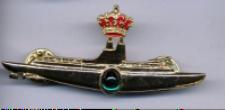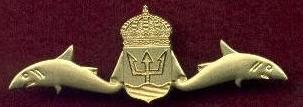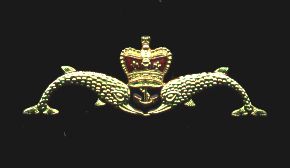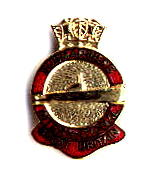|
SPAIN- The first submarine for Spain was designed in 1859 by two marine engineers. It was steam powered and was armed with a cannon and a drill for boring holes in enemy vessels. This design was never accepted by the Navy. Even in 1888, another submarine design which carried one torpedo tube and was battery powered was brushed under the rug and was not widely recognized. In 1916, the United States sold the Spanish Navy Holland design sub designated as the B Class. Over the next fourteen years six more improved B and C Class subs were built. During the same time, the Spanish Navy operated three Fiat boats designated the A Class. During the Civil War of Spain, the Republicans gained control of the submarine but were unsuccessful since the Nationalist were supported by Germany and Italy who supplied subs and crew members. The Republicans lost five subs while the Nationalists lost none. At the end of the civil war, the submarine fleet only consisted of a B Class and 2 C Class. These were complemented with the new improved D Class sub. The Spanish received a Balao Class sub from the U.S. in 1959 and eventually 4 Guppy II Class fro m1972 to 1974. After the diesels became absent in the United States, Spain turned to France to obtain Daphne Class designs. This in turn created the Delfin Class and Galerna Class of the Spanish fleet of today. The first Spanish Submarine Badge was issued in 1919. The badge had either a red enamel oval for qualified personnel or a blue enamel oval for those in training. It was topped by a Bourbon crown (sometimes seperate or attached). It was worn on the right chest by officers and petty officers and on the right arm for seamen. In 1940 after the Spanish Civil War the badge was changed to the shape of a modern shape and topped with the Franco Regime Coronet. The enamel oval was also replaced with a jewel or stone. After Juan Carlos' accession in 1975, the submarine badge changed the Coronet back to Bourbon Crown. The top badge is one of the varities for those that had passed the submarine specialty course. This variant has the cable cutter on the front missing. The current badge which was authorized in 1986 went back to the original 1919 design. The new version for those who have passed the submarine specialty course has a large red jewel. The Bourbon crown has red enamel in it. The green jeweled badge is worn by those who have passed the submarine aptitude exam. A black stone version is also available for those who have held submarine staff or support billets but it is not an authorized badge. |



|
SWEDEN- The Swedes started their submarine force in 1883, but the Navy was not interested in the submarine so they sold it to Greece. The first sub to be built to Lake and Holland's specification for the Swedish Navy was the Hajen in 1904. Italy sold the Swedes a Fiat-Laurenti type sub in 1909. From 1910 to 1911, five Hajen Class were built and two Laurenti types followed in 1914. Thanks to German technology at the end of World War I, eight Salen boats were constructed. Currently the Swedish Navy operate approximately twenty-five submarines including a midget submarine that is used for Anti-Submarine Warfare training. The current version is a gold badge with two scaled dolphins facing outboard and supporting a crown topped shield with a trident in it. It dates from 1983 and was officially authorized in 1995. The smooth version that is seen on the right is a recent badge. I'm not sure if it is authorized. |


|
SYRIA- No badge has been issued for this country. The Syrian Navy only has one active submarine and it's an ex-Soviet Romeo Class sub. Before this, they used two Romeo and one Whiskey Class as a charging station. |
|
TAIWAN- The Taiwanese Submarine Force began in 1973 with the commissioning of two U.S. Guppy type submarines as the Hai Shih Class sub. In 1987, two more submarines, Dutch Zwaardvis type, were added to the Hai Shih Class. Modern submarines are difficult to come by in Taiwan due to the tensions between Taiwan and China. The Taiwanese Submarine Badge was put into place in early 1966. It is based on the U.S. design but the submarine is heading straight on. The bow has the Chinese 12 point sun at the center. The gold version is for officers and the silver is for enlisted personnel. It is authorized for personnel who have attended five months of training on shore and have been onboard for one year. It has a screw post attachment. Cloth and miniatures are not authorized, but the cloth versions do exist. |

|
THAILAND- During the mid 1930s, Japan sold four I Class submarines to, then, Siam. These subs stayed active until 1955 when the lack of parts forced Thailand to decommission the submarines. The Royal Thai Navy is negiotating to order replacement boats and they appear to be leaning towards China for Romeo Class subs. The Siamese Submarine Badge is one of the rarest badges to find that is authenicate. It is a copper badge with a submarine on a pink flowered wreath. This badge is unique because the badge has an anchor suspended from the bow. The badge's attachment is usually by saftey pin. |

|
TURKEY- Turkey entered the race for submarine warfare after her enemy through history, Greece, had purchased unwanted subs from Sweden. The submarine that was built from scrap parts was considered unworthy and eventually scrapped. The Turkish Navy decided to put submarine operations until 1927. At this time the Turkish Navy bought two Dutch submarines. As a complement, two more subs were bought from the Italians. In 1935, the Germans delivered the Gur followed shortly by Yidiray and Saldiray from 1938 to 1939. By the start of World War II, the Turkish Navy was ten strong in the submarine fleet even though they were neutral during the war. These boats were eventually decommissioned after the United States supplied two Tang Class, 5 Guppy IIA Class, and 2 Guppy III Class submarines. These nine boats are still active along with 8 209 Class (German), 6 Atalay Class, and 2 Preveze Class submarines. The current badge was authorized in 1935 until 1956. The badge was brought back in 1977. It shows a submarine atop a bowed wreath. The wreath comes to a ring and is top by a star. This badge was originally for officers only. Now it is authorized for Senior Pett Officers and Warrant officers. It is a clutch pin attachment. The wool badges on the lower part of the picture is a set of rating badges for a Second Class Petty Officer. |

|
UNITED KINGDOM- The Royal Navy of England is one of the famous navies of history, however, when it came to the practice and theory of warfare under the ocean, the English scoffed at Holland's ideas. It was France, who love the idea, who convinced England to change their minds. The first submarine appeared in 1900 and by 1910 the submarine force was over fifty strong. During World War I, a fleet of nine, consisting of D and E Class subs, were very successful against the iron ore ships out of Sweden. However, seven of the nine were eventually scuttled to prevent the Communists from obtaining them during the Revolution of 1917. The English entered World War II with approximately sixty boats which included the T, U, and V Class submarines. During this time period, England became the leader in AntiSubmarine Warfare and even designed their ships to be hunters of the deep. The final diesel-electrics to be constructed before the commencement of nuclear power were the Porpoise and Oberon Class. Even these were successful in Britian and as an export item. The first nuclear submarine was the Dreadnought in 1963 followed shortly by the missile boat Resolution in 1967. The United Kingdom Submarine Fleet currently consist of 2 Vanguard Class, 2 Resolution Class, 7 Trafalgar Class and 5 Swiftsure Class. Before 1958, the only way to recognize an enlisted sailor on a submarine was by a cap tally that was a silk ribbon with gold thread lettering of H.M. SUBMARINES. In 1958, the English Fleet went to a cloth badge which was dubbed as the "Sausage Roll" or "Sausage on a Stick". The sailors depised these and refused to wear them and the fleet dropped them around 1964. A metal badge was finally authorized in 1971, after the Australian Submarine Force authorized some British submariners to wear the Australian badge. The current badge consists of two bottle-nosed dolphins supporting an anchor on a blue enamel shield and topped by a Queen's crown. It is authorized for all ranks and is worn on the left breast above the medal bar. It is a clutch pin attachment. The other two pins are from the Old Comrade Association which is the equivalent of the United States Submarine Veterans for their conventions. |




| Home Page |